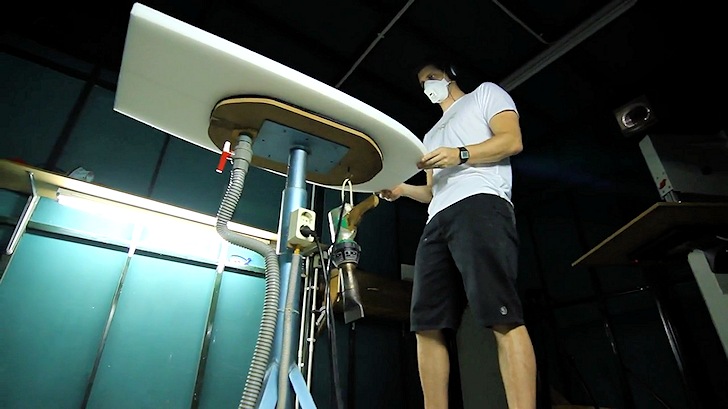Have you ever thought of making your own bodyboard? It's easier than you think.
Shaping bodyboards requires patience and standard skills, but building a bodyboard for your own rides will save you money, too.
The main features in a bodyboard are core material, tail shape, channels, concave, stringers, board shape, deck, rail, and slick types.
Contours, bumpers, and nose bulbs are extra features that may not be used.
Are you ready to shape your first bodyboard? Follow this step-by-step guide to bodyboard making:
Drawing the Lines
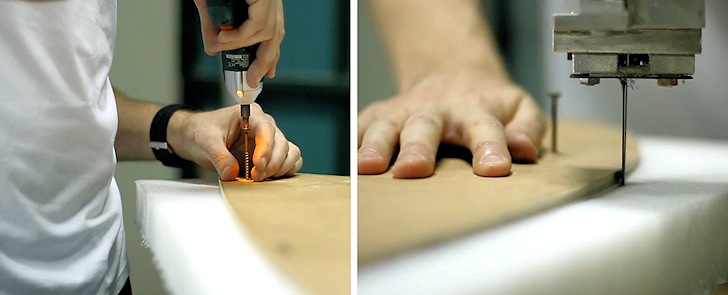
- Select your favorite core material: Polyethylene (PE) is a classic flexible core that works great in cold-to-mild waters, while Polypropylene (PP) is a stiffer, light, and durable core for warm waters;
- Use a rule to draw a central line from top to bottom;
- Measure the length and the wide point;
- Place your favorite outline or curve over the plank;
- Select whether you want a 50/50 (small surf, less drag, and lighter riders) or a 60/40 (bigger waves, more control, and heavier riders) rail configuration;
- Cut off the unwanted core to get the outside rail lines at a straight 45 degrees angle;
Cutting Edges
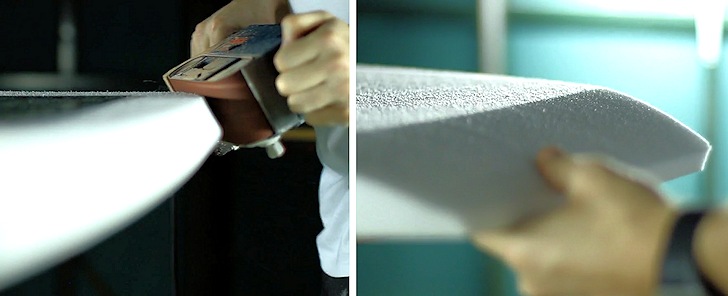
- Get a portable planer into the rails so that you obtain the desired double-edged rail;
- Apply light sandpaper all around the board;
- Check if you've got clean rail lines from nose to tail;
- Cut the nose curve into the board at 175 degrees;
- Mark the nose bulbs, making sure the board is all even;
Defining Performance
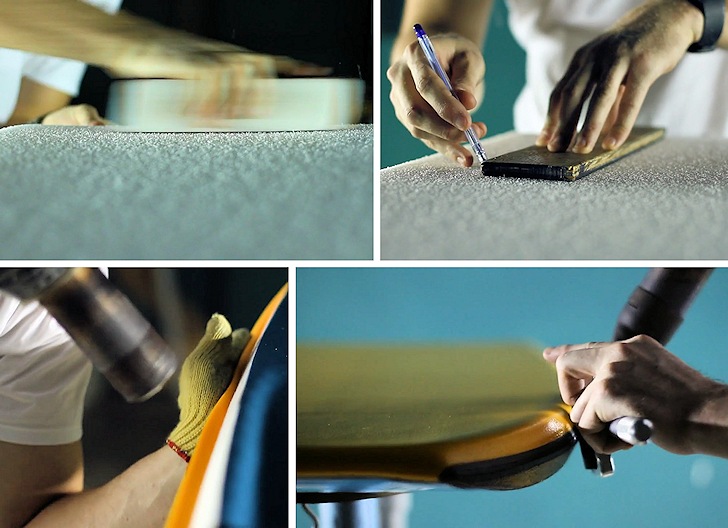
- Measure the center of the board and draw channel lines above the tail;
- Insert the nose bulbs;
- Apply the planer and sandpaper to the nose and channels until you get your favorite design;
- Lay the slick sheet (Surlyn or HDPE) over the board and start heat lamination;
- Gently press the slick all along to eliminate air bubbles;
- Remove the unwanted slick with a razor or X-knife;
- Pass the planer along the rails to remove imperfections;
- Measure the board length to determine where you're going to cut the tail;
- Select your favorite tail design: bat tail, square bat tail, clipped crescent tail, or full crescent tail;
- Draw the tail design over the board and cut it;
- Add 4mm nose and tail bumpers to protect from water, leash, and knee impact;
Final Heat Lamination
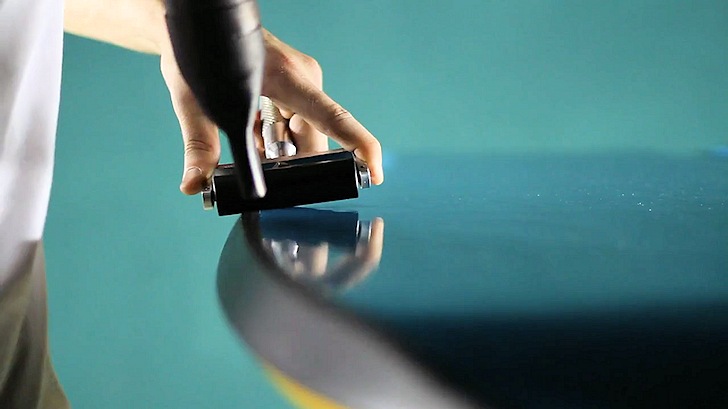
- Select a Polyethylene (PE) or Polypropylene (PP) deck sheet;
- Heat-laminate the deck and remove unwanted material;
- Find the center of the board and insert the tube stringer through the tail of your board;
- Heat laminate the rails and seal the edges;
You can shape your own bodyboard for less than 130 dollars (95 euros), with foam core materials and gear included. The following boards will be even cheaper.
Tools and Equipment
The main tools for shaping a bodyboard are:
- Two sheets of medium sandpaper;
- An X-Acto knife;
- A T-square;
- An industrial heat gun;
- A portable planer;
In the first phase, you need to choose the core and cut the desired shape.
In the second phase, you'll apply the deck and the stringer and finish the board with the lamination process:
